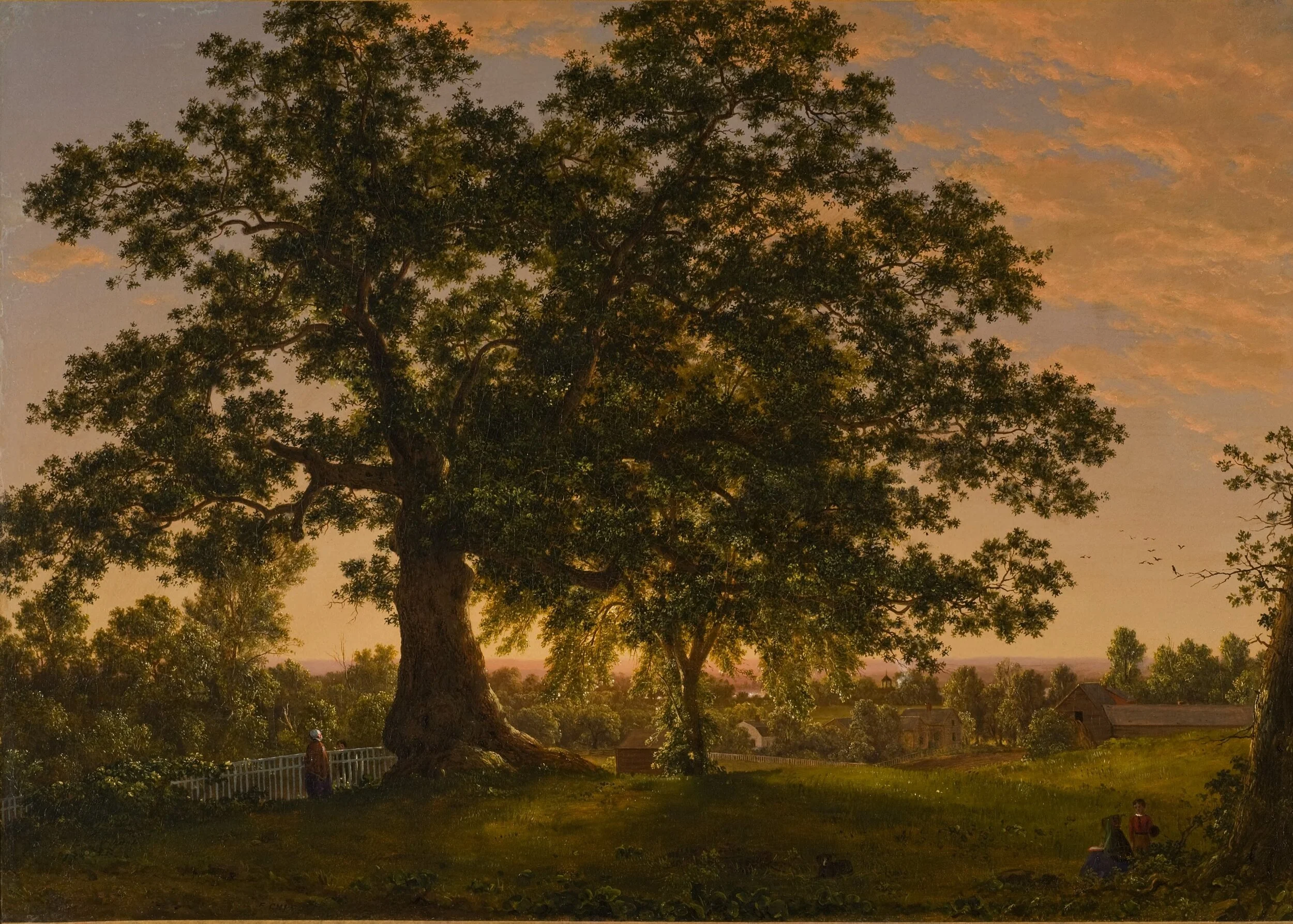Boots and His Brothers / The Charter Oak
Frederic Edwin Church, The Charter Oak, 1846. Oil on canvas. Florence Griswold Museum
Frederic Church’s home
Tom Lee tells a story in the court hall at olana.
“Blossoming apple tree” by Piet Mondrian, 1917
“I’ve been waiting for you to come and find me…”
“Boots and His Brothers” comes from the collection of Norwegian folktales called Norske folkeeventyr published by Peter Christen Asbjørnsen and Jørgen Moe in 1841. The original title of this story in Norwegian is “ Per, Pål og Espen Askeladd.” The name of the main character “Boots,” comes from the translation made by George Dasent in 1917 - that’s where I first found the story, so I’ve continued to call the character “Boots,” but a better name for him might be “Ashlad.” (“Askeladd”)
Ashlads, Noodleheads and Cindercats
There is a long tradition in folktales from many countries of a character called “Ashlad.” This is usually the youngest of three sons who spends his days just sitting by the warm ashes of the fireplace, poking the ashes with a stick. He usually dresses in tattered clothes and is generally considered an unlikely hero and a fool. In Germany, this character is usually called “Noodlehead;” Iroquois tales often have a youngest child who is “hidden-in-the-husks,” and Irish stories are full of Ashlads.
In the best of folktale traditions. however, this character always reveals extraordinary abilities when he begins to emerge into the world and face its challenges. The most famous of these children-in-the-ashes is, of course, “Cinderella,” who gets her name (“Cinder Ella”) from her lowly place by the fire. (In Italian, she is “Gatta Cenerentola,” named after the cat that usually sits by the warm ashes of the fireplace.) Here we see, as so often happens in looking at folktales, how one idea leads to connections with many, many stories.
Frederic Edwin Church’s “The Charter Oak” (1846)
The “Charter Oak” was a real tree, and a very famous one. You can read its history on the Connecticut History website here, and at the “Connecticut Explored” website here.
Frederic Church grew up in Hartford, Connecticut, next to the beautiful Connecticut River. As a adult, and a very famous painter, he moved next to another beautiful river, The Hudson River in New York. There he designed an estate he named “Olana.” Mr. Church made two paintings showing The Charter Oak. One is now at the Florence Griswold Museum in Old Lyme, Connecticut; the other hangs upstairs at Olana - you can learn more about that version of the painting here.
Another artist, Charles De Wolf Brownell, who was a good friend of Frederic Church, also made a painting of The Charter Oak. That painting is in the Wadsworth Atheneum in Hartford, Connecticut. You can see that picture here.
Portraits of Trees
Artists have made paintings of trees for centuries. Some of these seem almost like portraits of people. Different trees have different personalities - or should that be “arboralities?” Here are three examples of paintings of trees by Camille Corot, Piet Mondrian, and Jan Van Goyen.
Do you have a favorite tree? One you like to climb, sit under, or just look at throughout the year? You may want to draw a “portrait” of your favorite tree.
Drop me a note!
I would love to see your illustrations of “Boots and His Brothers,” or see your tree-potraits.
Send your images to me website here.





